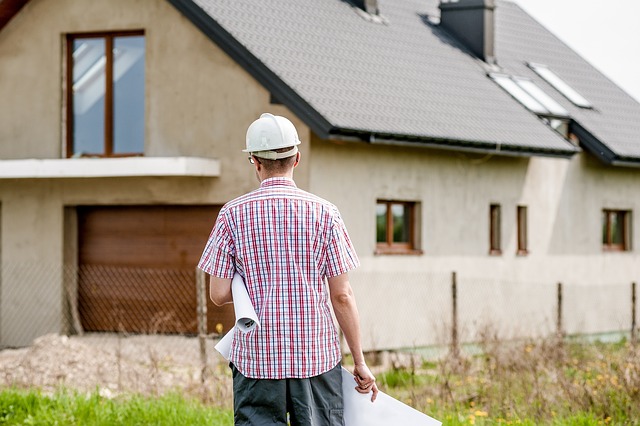Homeowners planning renovations should first evaluate their property for necessary repairs and maintenance to enhance both functionality and resale value. This assessment should focus on structural integrity, electrical systems, plumbing, insulation, and overall living conditions. Prioritize urgent repairs and consider long-term benefits and budgetary constraints when deciding on upgrades that improve energy efficiency, accessibility, and comfort, while also increasing market value. Financial planning is essential, with a recommended contingency fund of 10% to 20% of the total cost to account for unexpected expenses. Safety-critical issues like structural weaknesses or electrical risks should be addressed promptly, followed by less urgent cosmetic improvements. Throughout the renovation process, meticulous expense tracking is crucial for budget monitoring and informing future financial decisions in home repair and maintenance. Adhering to a strategic budget plan not only achieves desired renovation outcomes but also maintains financial stability. Regular upkeep is key for a safe and efficient living space; homeowners should follow seasonal checks, routine system inspections, and guidelines for common home maintenance tasks to prevent minor issues from becoming major problems. Implementing a proactive approach to home repair and maintenance is essential for sustained optimal living conditions and property value.
Embarking on a home renovation journey can transform your living space into a more functional, comfortable, and personalized environment. This comprehensive guide navigates through the essentials of strategic assessment, budgeting, and meticulous execution to ensure your renovation not only enhances your home’s aesthetic but also its structural integrity and longevity. We delve into how to identify your renovation needs, prioritize projects effectively, manage finances for home repair and maintenance, and oversee the implementation with precision and care. Whether you’re looking to update your kitchen, expand your living space, or improve energy efficiency, this article serves as a roadmap to successful home renovation planning and management.
- Strategic Assessment for Home Renovation: Identifying Needs and Prioritizing Projects
- Budgeting and Financial Planning for Effective Home Repair and Maintenance
- Execution and Oversight: Implementing Your Renovation Plan with Precision and Care
Strategic Assessment for Home Renovation: Identifying Needs and Prioritizing Projects

When embarking on a home renovation project, a strategic assessment is pivotal to pinpoint necessary repairs and maintenance tasks that will enhance both the functionality and value of your home. Homeowners should start by conducting a thorough inspection of their property, noting areas that require urgent attention due to wear and tear or safety concerns. This comprehensive evaluation includes assessing structural integrity, electrical systems, plumbing, insulation, and overall living conditions. It’s not just about addressing issues but also considering upgrades that can improve energy efficiency, accessibility, and comfort.
Once the initial assessment is complete, the next step involves prioritizing projects based on a range of factors such as urgency, budget constraints, and the potential return on investment. Critical repairs, like fixing leaks or reinforcing structural elements, should be addressed first to prevent further damage or safety issues. After addressing immediate needs, homeowners can then focus on renovations that offer both functional improvements and aesthetic enhancements. Projects that increase property value, such as modernizing the kitchen or bathroom, or improving curb appeal, should be strategically planned within the scope of available resources. Effective project prioritization ensures a balanced approach to home repair and maintenance, aligning with long-term goals and financial considerations.
Budgeting and Financial Planning for Effective Home Repair and Maintenance

When embarking on home repair and maintenance projects, a well-defined budget is paramount for effective financial planning. Homeowners should begin by assessing their current finances to determine what they can afford without compromising their daily living expenses or long-term savings goals. A detailed inventory of the intended repairs, including materials and labor costs, will offer a clear understanding of the project’s overall budgetary requirements. It’s wise to allocate a contingency fund—typically around 10% to 20% of the total cost—to address unforeseen expenses that often arise during renovations. This proactive approach ensures financial preparedness and can prevent budget overruns, allowing for quality home repair and maintenance without undue financial strain.
Moreover, prioritizing repairs based on necessity and urgency is crucial. Critical issues, such as structural integrity problems or electrical hazards, should be addressed first to maintain a safe living environment. After addressing these pressing matters, homeowners can plan for cosmetic upgrades that enhance the property’s value and aesthetics. Throughout the renovation process, it’s essential to track all expenses meticulously. This record-keeping practice not only helps in monitoring the budget but also provides valuable data for future financial planning related to home repair and maintenance. By adhering to a strategic budgeting plan, homeowners can achieve their renovation goals while maintaining financial stability.
Execution and Oversight: Implementing Your Renovation Plan with Precision and Care

In wrapping up our discussion on home renovation planning and management, it’s clear that a strategic approach, coupled with meticulous budgeting and financial foresight, is paramount for successful home repairs and maintenance. By carefully assessing your needs and prioritizing projects based on urgency and importance, homeowners can navigate the complexities of renovation with confidence. The execution phase demands precision and attention to detail to ensure the renovations align with the initial vision while staying within budget constraints. Homeowners looking to undertake such projects should prioritize professional guidance to streamline the process and achieve desired outcomes effectively. With the right planning and management, your home can transform into a space that not only reflects your style but also stands the test of time in terms of functionality and aesthetic appeal.
